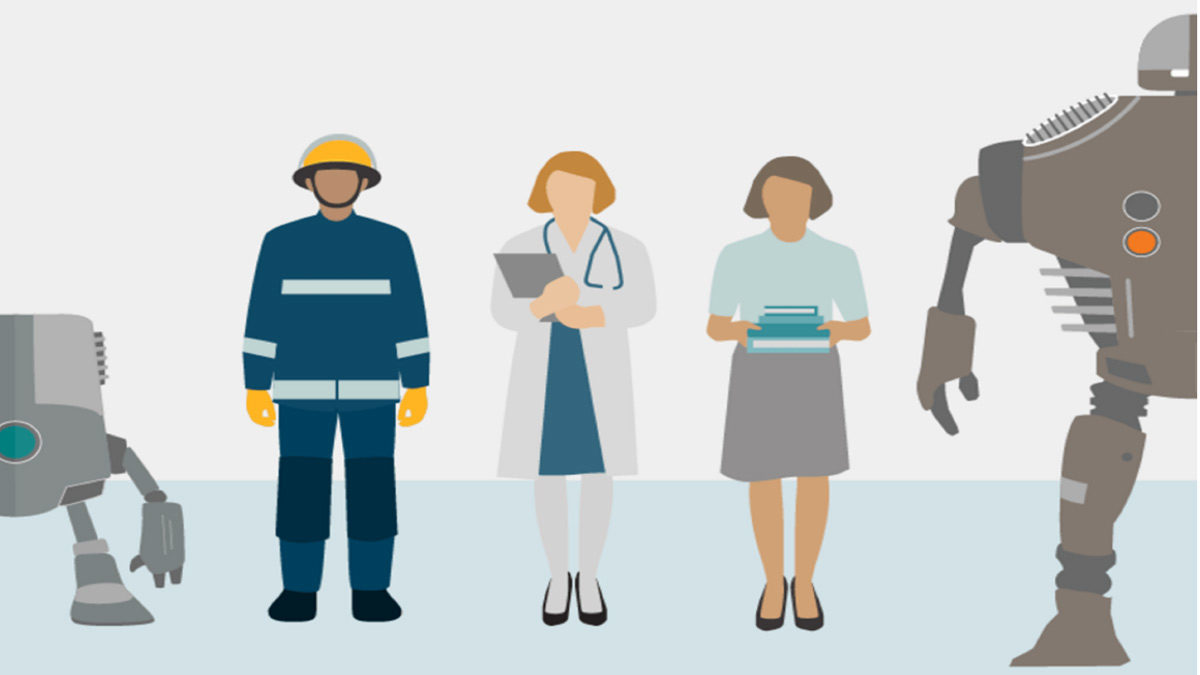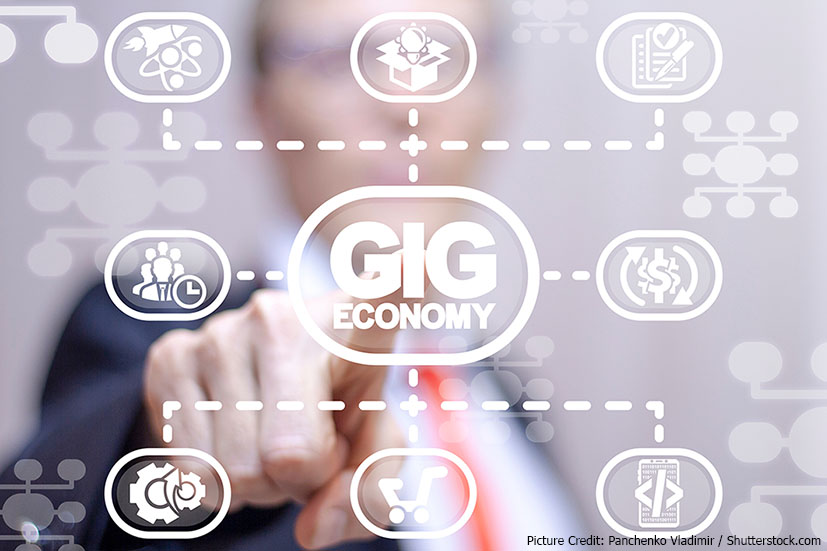This text will not just be read by people.
It will be picked up by online robots, fed into algorithms and transformed for a search engine, where it will help those looking for information on the “future of employment” to find it and read it.
During this process, the algorithm will understand a bit better who will actually read this article. It will have a look at what we read before accessing this article and what we will read after it. It will check where we are. Who we’ve talked to and what we’ve said. Where we spend our money. How many steps we took today and where we go every morning and every evening. If there’s another person we’re sleeping with. What it knows about that person. And what that tells it.
The algorithm is not curious. Its issue is existential. It needs our data to live. It feeds on them. We, on the other hand, are increasingly unable to imagine or even go through life without it. We write together when it finishes our sentences in our emails. We move together and trust it to find our way even more so than our own two eyes. It tells us what and how much to eat. Whether we’ve worked out enough today. What we want to watch. To read. To listen to. Who we are most likely to fall in love or simply have sex with. Who to vote for. What’s true and what’s a lie.
The phenomenon described by SoshannaZuboff in her book as Surveillance Capitalism is the key trait of the post-internet era. And it’s post-internet, according to HittoSteyerl, because the internet is dead. Not in the sense that it does not exist anymore, but in the sense that it’s everywhere. So much so that there’s no sense in talking about the internet as something far and beyond us.
What does it mean for someone to be employed in this day and age? In the age of automation, AI and continuous networking?
Over 20 years ago, EbenMoglen had formulated a theorem that might help us answer this question. According to Moglen’s theorem, if we were to interconnect all the people on Earth to a digital network, then digital products would be produced at almost zero labour costs. The most typical examples of this model can be found in the field of open-source software and open data: just think of Wikipedia, which is created by an army of volunteers, or Linux software, which runs on most servers on the planet and is generated by developers who choose themselves how, when and what to contribute. And there’s also the biggest collection of open data in Greece, Diavgeia, which is produced by public servants, officers and political staff, who post decisions online as part of their daily duties.
The secret in all these cases is that the size of each employee’s contribution is such that they would’ve done it anyway. This works as long as there is a mechanism in place that collects these contributions in a manner that does not make it difficult for anyone wanting to contribute, while, on the other hand, it allows anyone who wants to access the final result to do so also at zero cost.
So, right from the start, the issue was how to create such production-management mechanisms, which would allow us to find and coordinate those wishing to contribute to a project at the minimum possible cost, either because they would have done it anyway or because they would have asked for much lower salaries due to the total cost of life. Or because they were machines.
Welcome to the age of automated labour.
The experience of Wikipedia proved early on that it was not just football articles people were willing to write about for free. There’s a whole series of actions we perform in our daily lives that produce data, which, when collected and combined, may lead to useful products. Our movements can provide useful data about the best route from A to B. And our collective movements about where there’s traffic or not. Our searches and their results provide data about what we are searching for, what we like, what we want to listen to and what not. Our machine failures about the likelihood of additional failures. The comments for a product, a house or a taxi ride about their price-quality relationship. The CTs of patients with the same condition about the progression of their disease.
By the same token, the search for specific skills for activities that could be performed online led to a job market that had three traits: Firstly, it became truly globalised. If you want a translation, a repetitive task (e.g. collection of specific texts or photos) or a graphic design, you can reach a truly global market through platforms such as AmazonMechanicalTurk and search for the optimum result at the lowest possible cost, often avoiding labour law restrictions and without having to pay the relevant tax. Secondly, it allowed standardised and evaluated provision of services, irrespective of the provider of a task, which was sporadic and flexible in nature. From services such as Uber and AirBnB to Deliveroo, Airtasker and Andela, the platform has become the actual service provider. Through coordination and standardisation mechanisms, this platform secures the level of service sought by consumers; the person offering the service is fully replaceable by a score of employees who can perform the same task, and they are constantly competing against each other over the quality and speed of their service. Lastly, all the platforms manage to organise a task through algorithms, which they constantly monitor and, ideally, improve the level and reduce the cost of labour. Algorithms are the ones that ensure the collection of contributions, their standardisation and their structure into what the end user perceives as a single service, irrespective of the person providing it.
Let’s take a closer look at this last point: the people who participate in this sharingeconomy or gigeconomy always work with algorithms and robots and, to a large extent, this is a necessary evil, because automation technology has not yet reached the required quality/cost ratio to replace them. The Amazon delivery drones are a typical example. Furthermore, a recent study on the future of labour by DaronAcemoglu at MIT demonstrates that the higher taxation of labour compared to capital favours automation and does not allow the use of people, even in areas where their cost is significantly lower to that of AI.
Therefore, labour, especially when it comes to standardised and repetitive tasks, not just manual, but also intellectual, is caught between the rock of automation and the hard place of sharing economy: It will either be passed over to the machines or it will be offered at an extremely reduced cost through global sharing economy platforms.
The COVID-19 pandemic has further heightened the phenomenon of the digital transformation of labour: the latest issue of the Harvard Business Review was dedicated to work, not just from home, but from anywhere. It starts becoming evident that a large part of the tasks carried out at the employer’s premises with their equipment can now be partly or fully replaced by the employee working remotely; theoretically this increases the potential for flexibility, but in essence further shifts the costs to the employee, in terms of the equipment, connection and cost of the area where they work. It also increases the risk, as it intensifies deterritorialisation and eventually the gigification of work.
What are the policy reactions in this case?
Three models can be distinguished:
The first is the accelerationistmodel: Based on this model, any deterritorialisation, gigification and eventually meta-human labour trends are intensified. Such a policy mixture is favourable towards the platforms, completely deregulatory, and aspires to accelerate the process of abrupt digital transformation at all costs. This model undoubtedly favours platforms and the new job types created by them, but leads to irreversible accumulation of wealth, intellectual property and market control, with unforeseen consequences. At the same time, it is very likely to reinforce the most reactionary forces in society, as seen in the second policy model.
The second policy model is the reactionarymodel. In this model, an effort is made to halt the activities of platforms, mainly through strict regulation, introduction of duties, restrictions based on national security, ad hoc penalties or a complete ban on platform operation. Another version of the same model, with doubtful effectiveness though, is to completely ignore them and devise labour policies far and beyond them. In both reactionary model versions, however, either they cannot be applied or the eventual cost for society and the economy is enormous, while the results are extremely doubtful.
The third is the regulatory model, which regulates platforms through ensuring the actual operation of the market and reinforcing digital audiences. This model aspires to regulate affective labour by protecting personal data, to secure labour rights by branding sharing platforms as employers, to introduce the obligation of compensation for using platform content, to promote the ethical use of open data and open-source software in the public and research sector, and to introduce substantial competition rules for digital platforms.
It is evident that the model that will be chosen by each country will be directly related not only to its financial, but also to its geopolitical choices. China, the USA and the EU have chosen a mix of policies that contain elements from all three models, although it seems that the regulatory model, in various forms, is gaining ground everywhere. This is not random. If in the battle between cyber-paternalists and cyber-liberals 20 years ago, it was the latter who emerged victorious, as evidenced by the legislation on e-commerce and intellectual property, nowadays, the process has been reversed in terms of legislation, precedent and politics. From the European Digital Single Market Directive, which re-introduces liability for service providers of digital platforms, to the regulation of ANT Group by the Chinese authorities, the introduction of digital national sovereignty policies in all major jurisdictions or the investigation into the violation of competition rules by big-tech companies in the USA and the EU, it seems that platform regulation is here to stay for the time being. The extent to which this regulation can tackle the increasingly growing issues in relation to the future of employment remains to be seen. Perhaps the algorithms reading this article may be able to offer some sort of solution. You need not even ask them.
—
-
 Theodoros Karounos
Theodoros Karounos
Head of Digital Governance, National Infrastructures for Research and Technology (GRNET)
-
 Prodromos Tsiavos
Prodromos Tsiavos
Head of Digital Development, Onassis Cultural Centre




